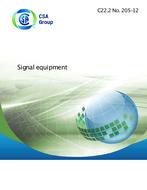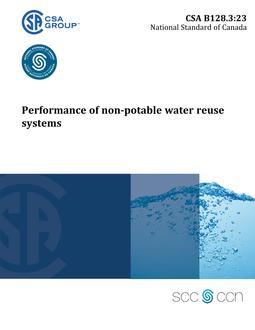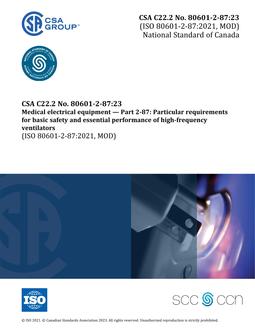
CSA C22.2 NO. 205-12
Preface
This is the second edition of CSA C22.2 No. 205, Signal equipment, one of a series of Standards issued by the Canadian Standards Association under Part II of the Canadian Electrical Code. It supersedes the previous edition published in 1983.
Scope
1.1
This Standard covers the electrical, fire, and shock hazard requirements for all signal equipment operating at
a) voltages up to 600V; and
b) double insulated equipment up to 240V
in non-hazardous locations in accordance with the rules of the Canadian Electrical Code, Part I.
1.2
The requirements are not intended to replace other requirements that are mandated by provincial, federal, or authorities having jurisdiction for aspects other than electrical fire and shock hazards, nor do they specify the performance of signal equipment.
Notes:
- While this document does not address the performance aspects of signaling equipment (volume of an audible indication or brightness of a visual indication), it does specify requirements for the electrical safety of these devices.
- Devices that generate radio frequency signals may also be subject to the requirements of Industry Canada.
1.3
This Standard covers equipment that performs a sensing and/or signaling function to convey alarm, status, or event-based information to the user and any subsequent associated activation function. The signal equipment may be stand alone or a part of a larger system. Signaling may employ wired or wireless means.
Note: The equipment can employ audible, visual, motion, or other signaling means such as chimes, gongs, lights, and displays.
1.4
This Standard applies to energy management equipment including sensing, monitoring, and actuation devices. The requirements also apply to home automation systems. The signal sensing components meeting the requirement of this Standard can be included in a smart grid application for energy management, other than for industrial applications.
1.5
Lighting photo relay systems, stand alone or incorporated within a luminaire, and evaluated as a combination in the final application are within the scope of this Standard.
1.6
This Standard does not apply to devices that are already covered by requirements of another Part II Standard.
1.7
Requirements for a specific type of equipment could have additional requirements as defined in Annexes A and B.
1.8
Sensors used for medical applications for Class A, B, or C facilities (as defined in CSA Z32) are within the scope of the CSA 60601 Series, and are not within the scope of this Standard.
1.9
Combustible gas detectors are evaluated to the requirements of CSA C22.2 No. 152 and carbon monoxide alarming devices for residential applications are evaluated to the requirements of CAN/CSA-6.19, and are outside the scope of this Standard.
1.10
Low level water cut-off is evaluated to the requirements of CSA C22.2 No. 24 and is outside the scope of this Standard.
1.11
Safety light curtains and similar products are outside the scope of this Standard.
1.12
In CSA standards, “shall” is used to express a requirement, i.e., a provision that the user is obliged to satisfy in order to comply with the standard; “should” is used to express a recommendation or that which is advised but not required; and “may” is used to express an option or that which is permissible within the limits of the standard.
Notes accompanying clauses do not include requirements or alternative requirements; the purpose of a note accompanying a clause is to separate from the text explanatory or informative material.
Notes to tables and figures are considered part of the table or figure and may be written as requirements.
Annexes are designated normative (mandatory) or informative (nonmandatory) to define their application.
Product Details
- Edition:
- 2nd
- Published:
- 11/01/2012
- ISBN(s):
- 9781554919888
- Number of Pages:
- 65
- File Size:
- 1 file , 1.6 MB
- Product Code(s):
- 2421953, 2421953, 2421953


